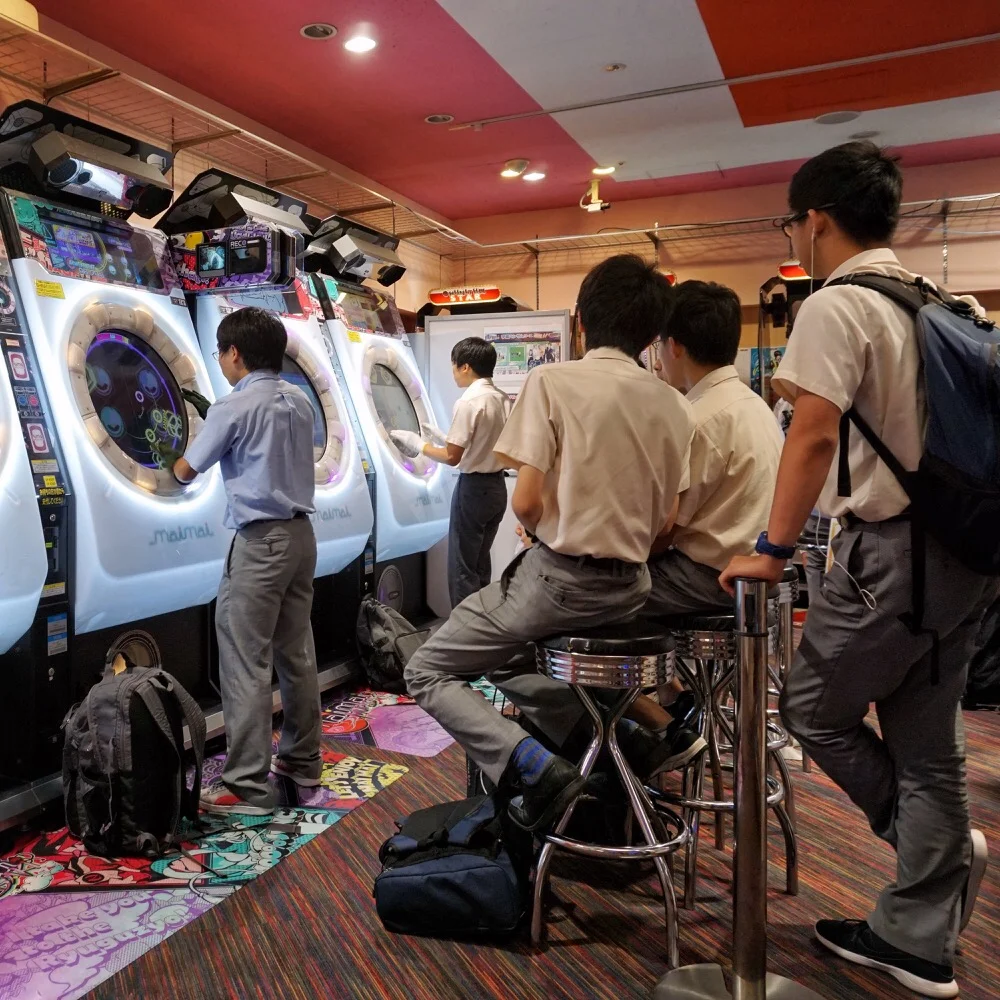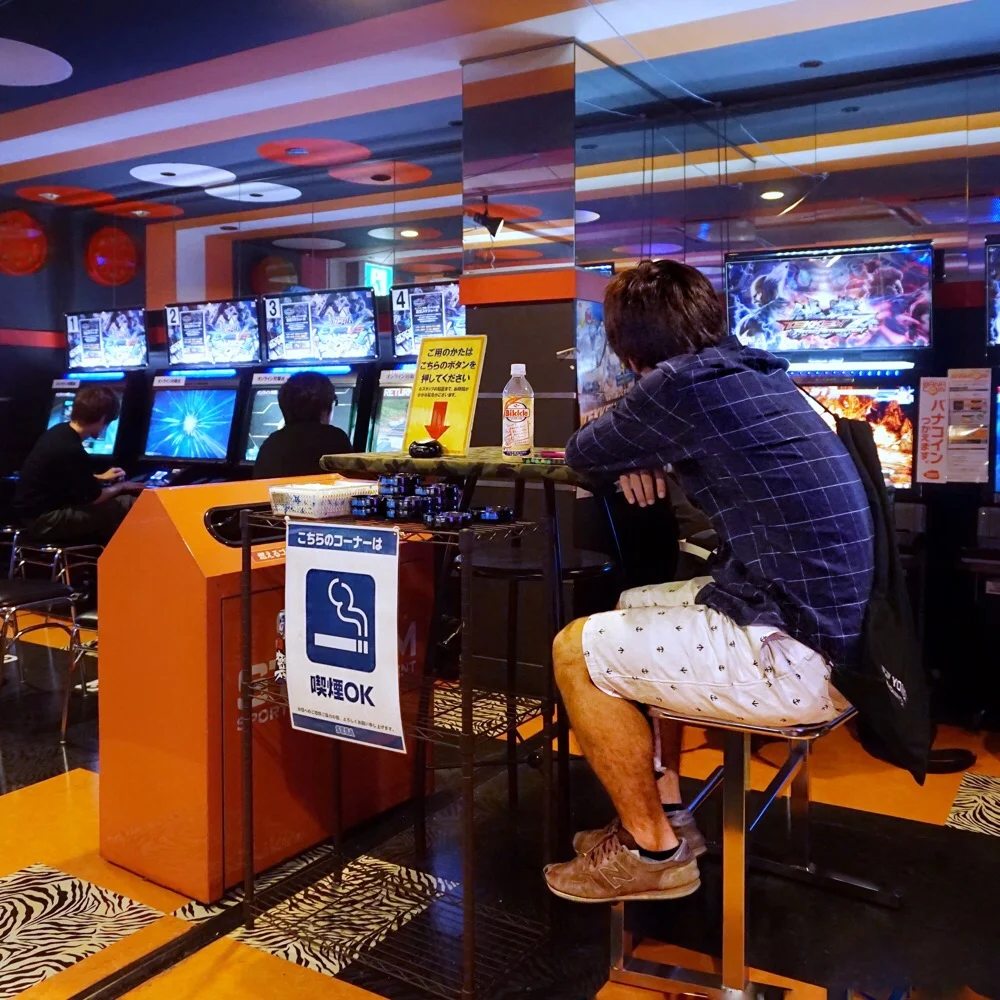What’s maimai?

Sega’s maimai has dominated the music game corners of Tokyo arcades since 2012.
It’s a rhythm action game played by touching a circular screen and eight illuminated targets that surround it. Prompts fly out from the centre, forming a musical score to be played to J-Pop and theme tunes. Simpler settings focus on the outside buttons, but more advanced players will be swirling and criss-crossing their hands around the screen.
The cabinet tells us a lot about the Japanese arcade scene, which is both social and obsessive.
For the social side, the machines are always in multiples. The four in this picture are two conjoined pairs and there’s no such thing as a solo maimai cab.
On top of that, inserting a smartcard (par for the course in Japanese arcades) allows you to record your performance, register your high scores, and share the scores and recordings online.
And this is not a half-arsed feature: the cabinet captures video of the main (circular) screen, the top (rectangular) screen with its status indicator *and the player*, all from a well-positioned in-cabinet camera. The result is absolutely fantastic and there are plenty of videos of maimai geniuses online.
As for the obsessive side of Japanese gaming, maimai ranks your performance as a percentage, and it goes *over* 100%, so there’s always a feeling that maybe you could be even more perfect.
The guys in the picture have their belongings in standing baskets provided at each terminal and they have gloves on so they can glide cleanly around the screen. The machines have headphone amps attached – de rigueur for music games in Tokyo arcades – but I’ve never seen them used on maimai. You’d have to route the wire down, round and up your back or something or you’d knot your hands.
Cool as they are, the cabs do look funny. And with their whizzing hands and manic stares, the players look like they’ve put a fiver in the washer and are frantically trying to get the door open.
Still, maimai should definitely be on your list when you visit Tokyo.
Photographer and writer covering Tokyo arcade life – the videogames, the metropolis and the people






